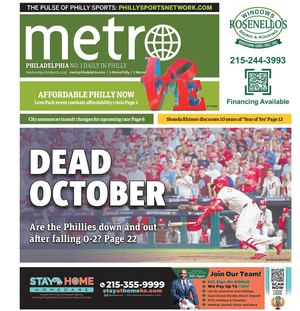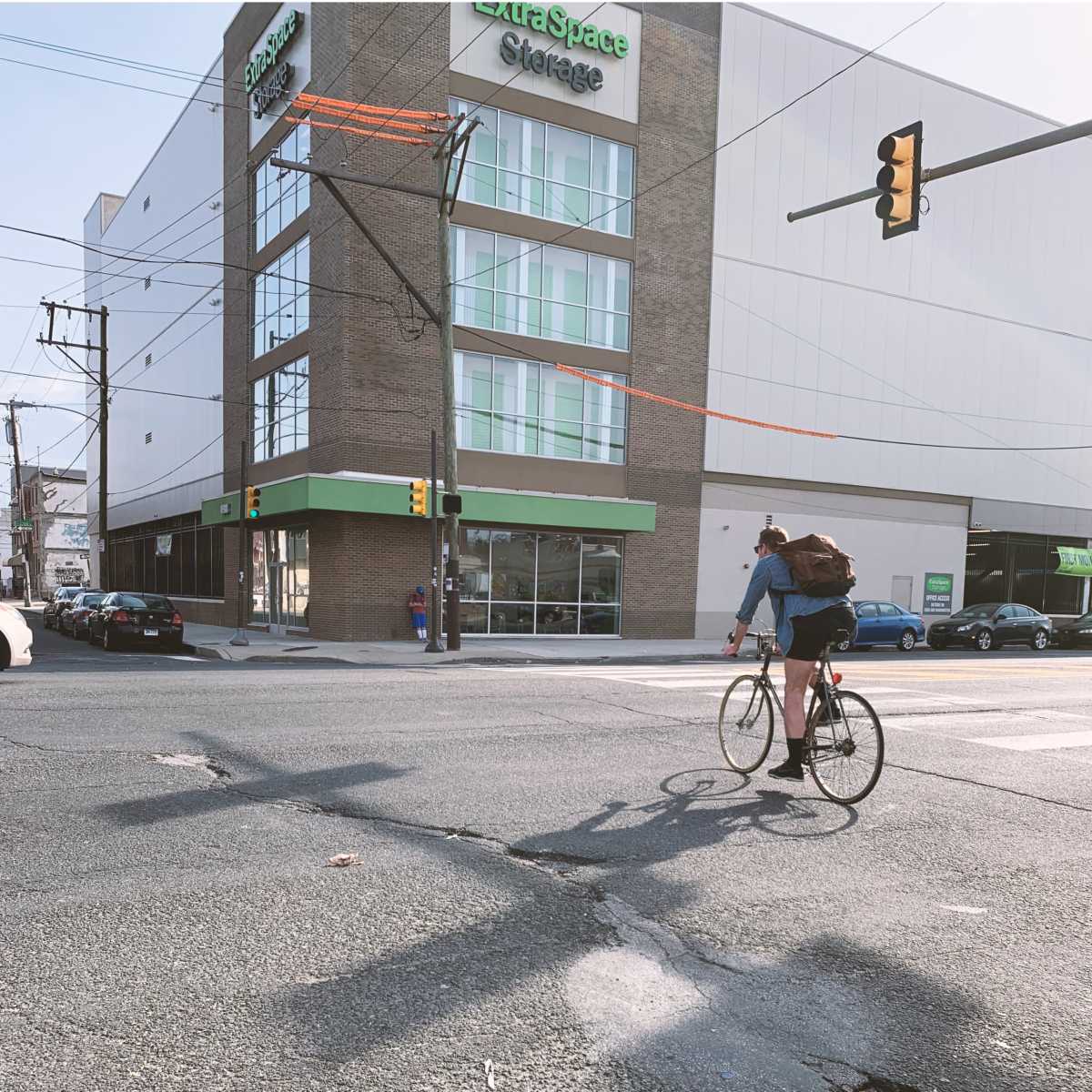Washington Avenue, an artery cutting across South Philadelphia whose future has been hotly debated, will be repaved with a “mixed lane” configuration, officials from Mayor Jim Kenney’s administration said Tuesday.
The road, which is currently five lanes, will be narrowed to three lanes across 10 city blocks; four lanes for eight blocks; and four blocks near busy Broad Street will continue to have five lanes, according to the plan.
As part of the repaving and restriping project, which covers the area between 4th Street and Grays Ferry Avenue, a protected bike lane will be installed along the entire stretch.
Washington Avenue’s reconfiguration has been highly contentious for a repaving project with a budget under $1 million.
The discussion has, at times, boiled over into a conversation about gentrification, race, safety and conflicting values between South Philadelphia’s longtime and newer residents.
Representatives from the city’s Office of Transportation, Infrastructure and Sustainability (OTIS) released the plan to the media ahead of a community meeting that was held Tuesday night at the Christian Street YMCA.
Deputy Managing Director Mike Carroll said that the “mixed lane” option strikes a balance between safety and the congestion and traffic flow concerns of some neighbors and business owners.
“We feel like this approach is going to substantially improve the safety over what people see today,” he told reporters during a virtual press briefing Tuesday morning. “That’s what people have asked for, and they’re going to get that in this option.”

In 2020, Carroll’s team put out a “Final Decision Decision” that featured three travel lanes — one in each direction and a turning lane.
Construction was delayed due to the coronavirus pandemic, and the Kenney administration decided to solicit additional feedback, with a focus on getting input from minority communities, officials said.
The city announced in early February that the three-lane proposal was off the table, provoking strong blowback from traffic safety advocates.
“After they reopened this engagement process, they did not invite the general public to it,” said Dena Driscoll, co-chair of 5th Square, an urbanist political action committee. “So they made all these decisions behind closed doors with a select group of people.”
Driscoll, a parent who lives near Washington Avenue, derided what she called a “disastrous project,” and 5th Square has raised about $13,000 in the last month to back candidates for City Council and mayor who support the three-lane option.
OTIS’s plan requires Council legislation to update parking and loading regulations, officials said.
Those changes will likely depend on the approval of Councilmen Mark Squilla and Kenyatta Johnson because of the city’s tradition of councilmanic prerogative, which holds that district representatives hold complete sway over projects within their boundaries.
Deliberations about the avenue’s layout have been ongoing since at least 2013, and the road has not been paved in nearly 20 years.
“One of the things that we were determined to do is make sure that we completed this project,” Carroll said. “It’s a chance for us to close this chapter and move on to the next part of what Washington Avenue could be.”
Refinements are possible after the asphalt hardens, Carroll said, and he added that he hopes Tuesday night’s meeting sets the city on track for projects five or more years down the line.
Albert Littlepage, president of the Point Breeze Community Development Coalition, who had expressed concerns about the three-lane plan, said OTIS’s latest proposal represents a compromise.
“Nobody received 100% of what they wanted,” he told Metro on Tuesday.
The section of Washington Avenue between 12th and 16th streets, which is slated to remain at five lanes, accounts for many of the crashes in the area and will be just as dangerous, Driscoll argued.
“I don’t compromise safety,” she said. “Every life is important.”
Littlepage said a three-lane “road diet” would have “caused starvation on the smaller streets,” with more vehicles cutting through residential blocks where children are more likely to play.
Washington Avenue is on Philadelphia’s high-injury network, meaning it has more crashes than an average city street. From 2016 to 2020, there were 169 collisions, including three fatal crashes, according to city data.
Turning cars were responsible for many of the crashes involving pedestrians and cyclists, Carroll said.
To combat that threat, OTIS’s plan calls for corner wedges with small bumps, which should slow down drivers. Additionally, some intersections will have delayed green lights to give walkers a head start.
Other safety features that will be implemented throughout the corridor include rumble strips and bus-boarding islands that will extend from the curb, Carroll said.
Officials are also considering speed slots — wider bumps that have been installed on Cobbs Creek Parkway. Speed cushions could go in on nearby blocks off the avenue and on intersecting streets.
Hardened centerlines, meant to prevent drivers from cutting a corner too closely or turning too quickly, may also be constructed along some portions of Washington Avenue.
Assuming City Council adopts the appropriate bills in the coming weeks, work is expected to begin this spring, with the goal of completing the project over the summer before paving operations grind to a seasonal halt in the fall.


























